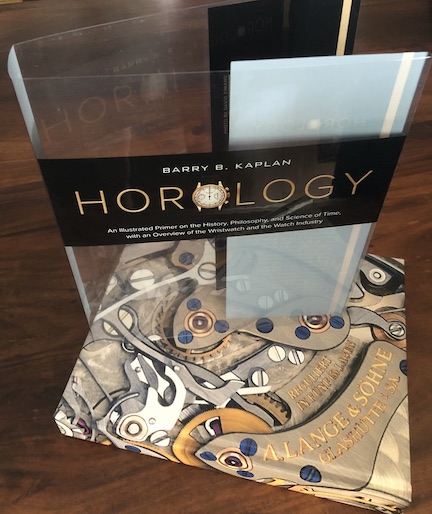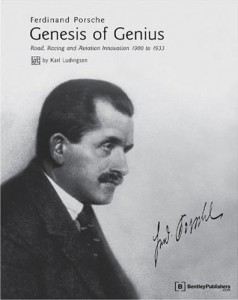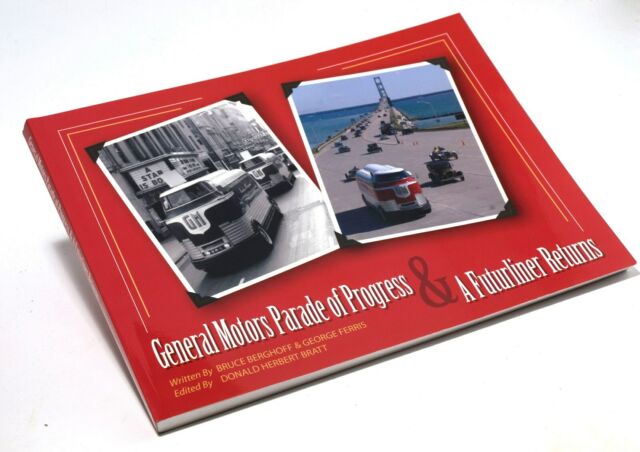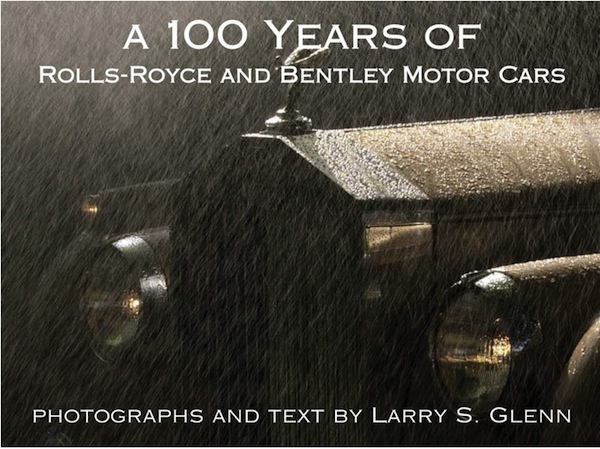Horology: An Illustrated Primer
on the History, Philosophy, and Science of Time, with an Overview of the Wristwatch and the Watch Industry
 by Barry B. Kaplan
by Barry B. Kaplan
“The shared passion for all things automotive is common among watch lovers. The intricacy of a multicylinder engine (with or without forced induction) working in tandem with a well-honed chassis, intuitive body control, and gorgeous body work has a one-for-one analog in the watch world. It is no wonder that over the decades, various watch brands have spent exorbitant marketing dollars on professional motorsports. Throughout the book I reference automotive themes in addition to other topics and disciplines of related interest. This is not just a book about watches. It is, one hopes, much more than that.
A compendium of sorts, this volume is an overview of the captivating world of time, watchmaking, and kindred disciplines. The diligent novice should, I hope, gain a useful grounding in the fundamentals.”
What a clever way for an author to introduce his book. This excerpt is from chapter 1, cleverly titled “What Is This Book?” Do we even still need a review? Already the subtitle pretty much tells you everything you are to expect; all we can really do is to say the book ticks all those boxes and more.
 We often say about books by Schiffer Publishing that they are high on features, low on price. Is that ever true of this book! If first impressions count for anything, linger a moment over the book cover. Just as watches have complications (naturally, the book will explain what that is all about) so does the cover: it has a removable outer cover of clear heavy acetate imprinted with the sort of things normally found on a book jacket; being see-through allows an unimpeded view of an intricate watch movement printed on the actual cover boards and which wraps around the spine to the back. Not at all normal for a $35, 320-page, lavishly illustrated hardcover.
We often say about books by Schiffer Publishing that they are high on features, low on price. Is that ever true of this book! If first impressions count for anything, linger a moment over the book cover. Just as watches have complications (naturally, the book will explain what that is all about) so does the cover: it has a removable outer cover of clear heavy acetate imprinted with the sort of things normally found on a book jacket; being see-through allows an unimpeded view of an intricate watch movement printed on the actual cover boards and which wraps around the spine to the back. Not at all normal for a $35, 320-page, lavishly illustrated hardcover.
Why we keep time, how we keep time, why we should care, and the very concept of time vis-a vis the human condition, that’s where the book starts. Nothing about this is straightforward because we’re dealing with matters we have become conditioned to and no longer reflect upon. One way to step out of that cage is to explain time to a child. Good luck with that . . .

A fossil of sorts, the Antikythera mechanism dating to approx. 70BC, “one of the most enigmatic devices ever discovered; like finding a 747 a thousand years before the Wright brothers ever flew.” Also note the abundance of marginal glosses and footnotes (7!).
A remark of Kaplan’s from near the back of the book is instructive. He thanks his parents and grandparents for fostering “inquiring-mindedness” in him. Whenever a writer has a yen for bending words to his will you better believe he will have a precisely calibrated sense for what he means to express. Later still there is a nod to rabbinical instruction (in fact, the Appendix is parts of a translated text on “The Principle of Intercalacation” which is an attempt to work out the biblical timeline) and the text is liberally sprinkled with Hebrew theological references, all of which means that Kaplan is at home with big ideas all the while being “captivated by minutia.”

Another example of cleverness. The device (a calendar) is shown at reduced size to fit into the outline of a hand so as to illustrate its size.
The book only calls Kaplan a “third-generation industry contributor” which doesn’t really convey that he is/was a watch designer, accountant, grandson of a Swiss watchmaker, and CEO of the US operations of various watch/jewelry entities. More than anything, he loves watches and one would have to be pretty tone deaf not to pick that up in his writing style, which is also witty were wit fits.

Observe how the letter O in the header has a minute and hour hand!
It takes a good 70 pages to roam from 20,000-year-old architectural remnants to the ultra-modern infinitesimally small unit called “Planck time” before the book gets to the actual architecture and mechanical parameters of the wristwatch. This is followed by a lengthy exposition of watch design and dial layout, both in the context of esthetics and the “under the hood” realities of what can fit where on the small patch of real estate that is the shallow watch case; and brief notes on caring for your watch and starting a collection. The final item, a good 70 pages on the inner workings of the watch industry, is on the hand quite removed from the foregoing but on the other hand of real relevance for collectors and industry types. The latter point is necessary to make because Kaplan will extrapolate from this analysis and present the reader with forecasts which he calls “just for fun” but which, having been written many months before the book was actually published (thanks to the pandemic etc.), have already proven to be high-order prescient: unstoppable Rolex market penetration, mortgage rates above 6.5%, Covid mutations, watch dial colors, the merits of a Swatch/Omega mashup . . . to name just a few. He is so right on so many things you may want to let him pick your lottery numbers!

Technical drawings, even if they have legends, tell you nothing until someones spells out what does what; Kaplan does.

Remember the strokes of an internal combustion engine? This diagram explains what makes a watch tick.
The technical illustrations are superb as are the legends that go with them, as are the lengthy photo captions. One hair in the ointment is that they are in a smallish font, and in a color/colors other than black, which makes them hard to read. The same applies to the running heads and folios, and also the many footnotes. Most conveniently, the latter are printed right at the bottom of the pages on which they are called out; they are consecutively numbered—that there are 275 in a 320-page book is again a sign that the author is very intentional how he packages information. Further, there is a fine Index and rather than calling it brief (~6000 entires) one should think of it as curated, meaning someone had a good enough understanding of the subject to know what to leave out.

You didn’t think watch dial design was random, right?
Just to be thorough we will point out that in 2016 Kaplan published the paperback The Novice’s Guide to All Things Horological: A Primer on Timekeeping, The Wristwatch, and its Styles and Complications (ISBN 979-8602426724). Its 63 skimpy pages surely went into this big new one so only completists would trouble themselves chasing it.
We end with an Oscar Wilde quote from the beginning of the book: “If one cannot enjoy reading a book over and over again, there is no use in reading it at all.” Does this review leave any question which type of book this one is?
Copyright 2023, Sabu Advani (speedreaders.info).


 RSS Feed - Comments
RSS Feed - Comments





































































 Phone / Mail / Email
Phone / Mail / Email RSS Feed
RSS Feed Facebook
Facebook Twitter
Twitter